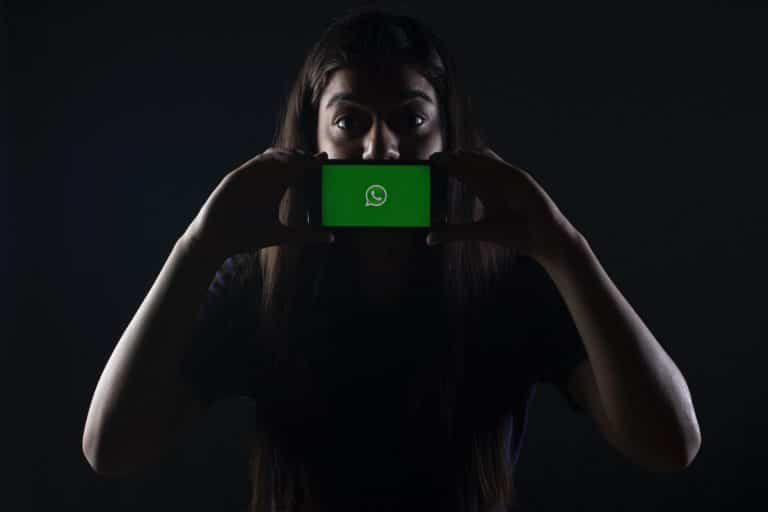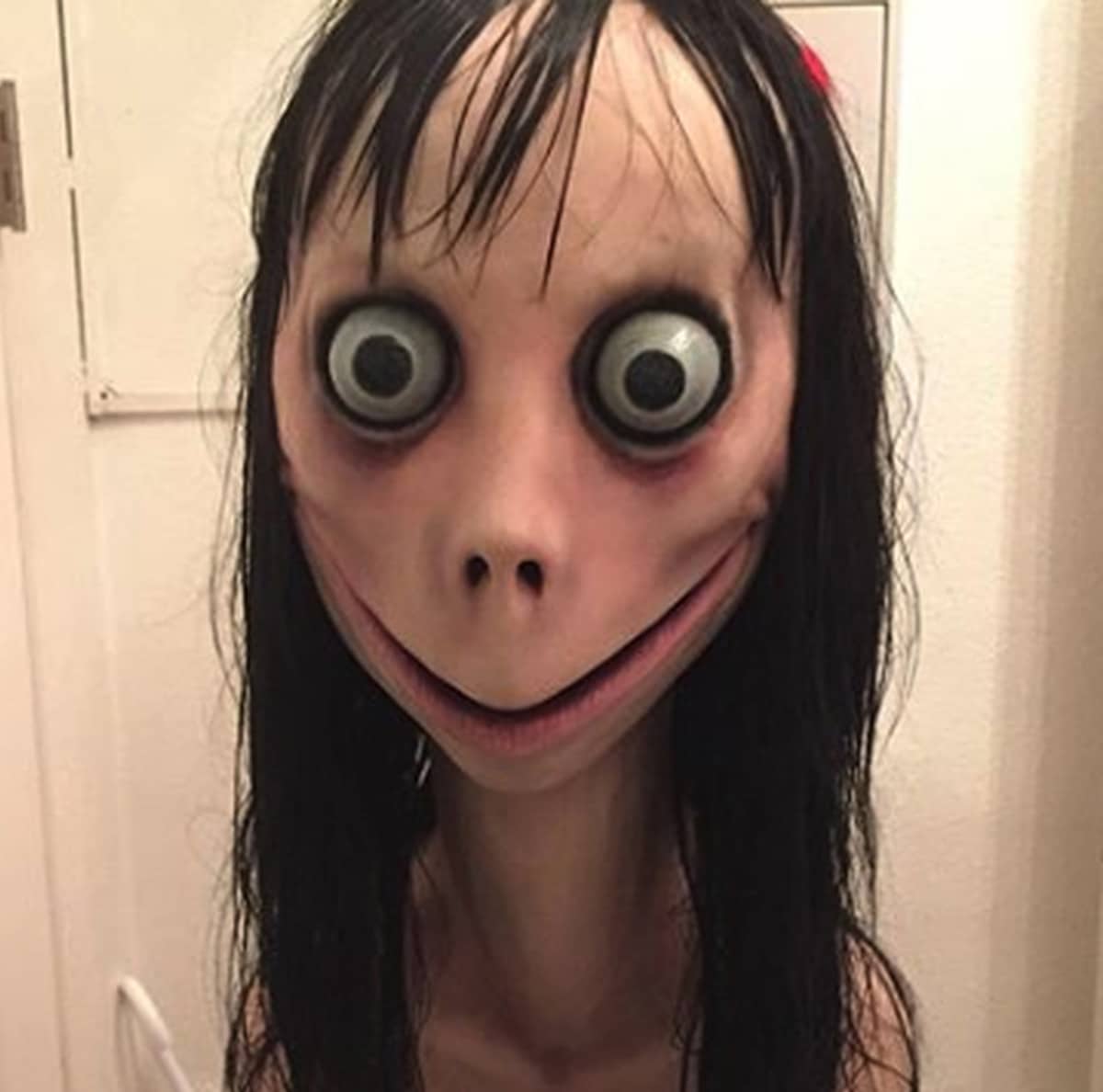What is the Momo challenge?

The internet has brought a wide range of strange challenges and games, from teenagers eating detergent pods to the cinnamon challenge. Prior to that, jump scare YouTube videos or even violent video games were the things parents worried about. That was until the Momo challenge appeared in 2018. What was this challenge about, where did it come from and was it really a hoax? Here’s everything you need to know about the Momo challenge story.
What is the Momo challenge?
The Momo challenge was an online challenge that started getting recognition in 2018. Momo allegedly targeted young children by encouraging them to text a number on WhatsApp, which then sent them instructions to complete a series of strange and dangerous tasks from watching a horror movie to engaging in self-harm and committing suicide.
Although reports of the Momo challenge had been floating around the internet for a while, the trend truly picked up when it made the news after a Facebook post from the Police Service of Northern Island (PSNI) issued a public warning to parents urging them to be careful about their kids’ activity on WhatsApp. Around the same time, there had also been reports of trolls editing kid-friendly YouTube videos to include images of Momo, as well as instructions encouraging them to self-harm.
Once the social media challenge spread across Facebook and news outlets, the Momo challenge was classified as “a worldwide phenomenon” after an Indonesian newspaper reported that it had caused a 12-year-old girl to kill herself. In 2019, even Kim Kardashian had posted on her Instagram Story pleading for YouTube to remove alleged Momo videos.
The challenge claims to have existed in the US, the UK, Canada, Ireland, India, Pakistan, Luxembourg, Belgium, Iran, the Philippines, France, Indonesia, Brunei, Hong Kong, Spain, Portugal, Mexico, Colombia, Chile, Argentina and Australia.
What is Momo, and where did it come from?
Unsurprisingly, the pictures used to depict Momo, while undeniably terrifying, had nothing to do with the Momo challenge itself. The bug-eyed doll with messy hair similar to The Ring’s frightening main character and skinny limbs that was associated with the challenge is in fact a sculpture made by Link Factory artist Keisuke Aisawa, a Japanese company that specialises in horror film props. The sculpture was even displayed at a show at a gallery in Ginza, Tokyo in August 2016.

According to Rolling Stone, with her bird-like claws, the statue may be inspired by the Japanese bird woman, or ‘ubume’, a wraith-like figure who is said to have died during childbirth. After photos of the sculpture were posted on Instagram, they started to gain traction on Reddit, particularly the subreddit r/creepy, where it collected thousands of upvotes and comments.
Where does the Momo challenge come from?
The actual origins of the Momo challenge remain unclear but it reportedly appeared in Spanish-speaking countries first, with Mexican authorities claiming that the trend stemmed from a Facebook group. Looking at Google Trends, however, the Momo challenge didn’t really pick up in English-speaking countries until YouTuber ReignBot made a video devoted to unpacking the phenomenon in July 2018.
According to the video, those who texted ‘Momo’s number’ were told to complete a series of dangerous or frightening tasks, starting with something innocent like watching a horror movie late at night and ending with a call for kids to self-harm or take their own lives. Failure to complete the tasks apparently would result in their personal information being leaked or threats of violence.
ReignBot’s video, which has since been removed from YouTube after the platform announced on Twitter that it would no longer allow videos featuring Momo to be monetised, debunked the challenge by pointing out the relatively harmless origins of Momo. Nonetheless, stories started circulating in the press about the dangers of the Momo challenge, quoting ‘internet safety experts’ urging parents to watch out for warning signs that their children were playing the game.
One report went as far as to suggest that a 12-year-old girl in Buenos Aires took her own life as a result of playing the Momo challenge. We now know that this report was poorly sourced and unconfirmed. A few years after, many have realised that the Momo challenge could have simply been a hoax.
Was the Momo challenge a hoax?
The Momo challenge turned out to be a hoax—an internet urban legend about a nonexistent social media challenge that was spread on Facebook and media outlets. Although it was reported that children and adolescents were being enticed by a user named Momo to perform a series of dangerous tasks including violent attacks, self-harm and suicide, the number of actual complaints was relatively small and no law enforcement agency has confirmed that anyone was harmed as a direct result of it.
Concern and distress registered by children was primarily driven by media reports rather than as a result of Momo, which led many charities to view warnings against the made-up phenomenon as causing more harm than good by leading to a self-fulfilling prophecy that could encourage children to look up violent material online. In other words, misinformation and poor reporting were the actual creators of the Momo challenge.
Experts on mental health explained that such hysterical news coverage could potentially inspire imitators. For example, when two 12-year-old girls from Wisconsin attempted to stab their best friend to death, they later claimed that they did so to appease the fictional internet boogeyman ‘Slender Man’. While the Momo challenge never existed, its wide coverage could have inspired children to harm themselves or others.
Should parents be concerned about the Momo challenge?
While the Momo challenge itself was proved to be a hoax, parents should remain vigilant of what their children get up to online. With websites like Best Gore and TheYNC, the risk of seeing disturbing content on the internet is all too real. The idea of a mysterious Momo communicating with kids via WhatsApp and urging them to kill themselves, however, is less plausible.
Ultimately, the internet can be a pretty dangerous place for kids, which is why parents have to be aware of what their children might see on there. Then again, life in general is pretty scary, so a fake Japanese bird lady might be a good place to start.





